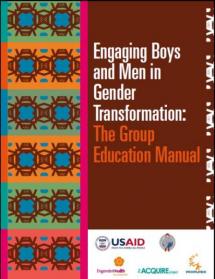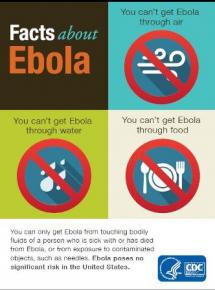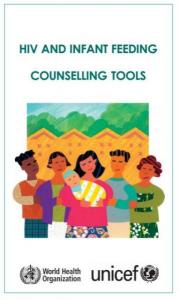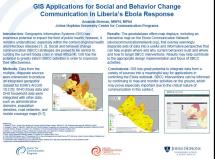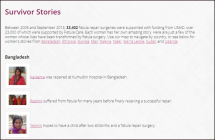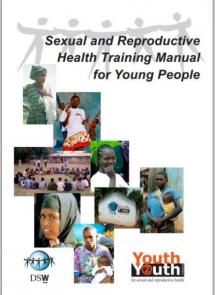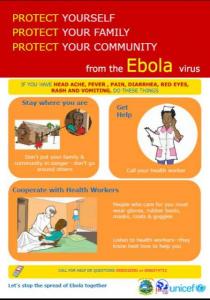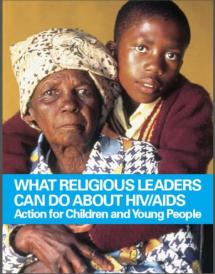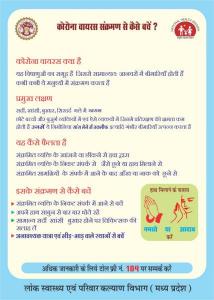Engaging Boys and Men in Gender Transformation: The Group Education Manual
This 11-chapter manual offers trainers an array of participatory experiential exercises to reach men (and their partners), exploring gender socialization and its impact on HIV prevention and care. Piloted in Ethiopia, Namibia, South Africa and Tanzania, the manual is designed to assist master trainers in developing curricula to work with men and boys on gender, HIV and AIDS issues.
After a short background discussing the scientific rationale, chapter topics include: Gender and Power, Sexuality, Men and Health, Substance Use, Healthy Relationships, STI and HIV prevention, Living with HIV, Fatherhood, Violence and Making Change-taking Action. This educational manual allows men to question non-equitable views about masculinity and develop more positive attitudes to prevent unhealthy behaviors that put them and their partners and families at risk. It can also be used to train facilitators who will implement workshop activities with groups of men.
The activities are intended for use with men of all ages, although some adaptations might have to be made depending on the ages of the men and the country and community context. These activities can also be adapted for use with groups of men and women.
Source: EngenderHealth, Promundo
Date of Publication: October 15, 2021
SIMILIAR RESOURCES
Tools
Examples
- Technical Brief: Socially Marginalized Groups and COVID-19
- The Facilitation Primer
- Faith-Based Engagement in Family Planning
- Translators without Borders Glossary for COVID-19
- Love, Children and Family Planning: Seven Discussion Guides for Christian Small Groups
- A Guide to WHO’s Guidance on COVID-19
- Birth Spacing and Family Welfare Sermons
- Identifying & Mitigating Gender-based Violence Risks within the COVID-19 Response
- Safe Ramadan Practices in the Context of the COVID-19: Interim Guidance
- Bringing the Community Together to Plan for Disease Outbreaks and Other Emergencies
- Implication des leaders religieux à travers une conception centrée sur l'humain au Niger/ Engaging Religious Leaders through Human Centered Design in Niger
- Community IPC Guide - Malaria
- All Together Now! Community Mobilization for HIV/AIDS
- Understanding and Challenging Stigma Towards Men Who Have Sex With Men: Toolkit for Action
- Malaria-themed Radio Magazine Program

